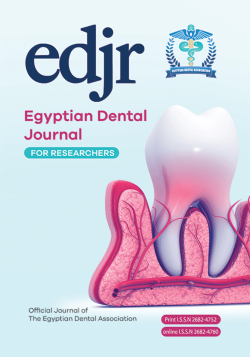Shaima�a Ahmed Aly, Ahmed Gamal Ahmed Hassan, Emad Mohamed Tolba And Gehan Fekry Mohammed,
ABSTRACT
Objective: Long-term Success Of Dental Implants Depends On Implant Abutment Connection . This Prospective Study Aims To Assess Bone Level Changes Around Implants With Self Locking Conical Connection And Traditional Platform Implant Abutment Connection With Mandibular Telescopic Supported Overdenture.
Materials and Methods: Twelve Completely Edentulous Patients Were Selected From The Outpatient Clinic Of The Prosthodontics Department; Faculty Of Dentistry, Minia University. Two Root Form Implants Were Inserted In Canine Area Bilaterally In Each Patient One Is Self -locking Implant Abutment Connection While The Other Is Traditional Platform ,then Telescopic Overdenture Was Constructed Over The Two Implant. The Crestal Bone Level Was Evaluated At 3,6,9,and 12 Months.
Results: The Mean Bone Heights At Different Intervals Of Self-locking Implant Abutments Connection Were 0.12�0.13 , 0.36�0.13, 0.51�0.06, 0.70�0.22,and0.81�0.25 At Baseline Three, Six, Nine And Twelve Months Respectively , While With Traditional Platform Implant Abutment Connation The Mean Bone Height Were T0.36�0.15, 0.58�0.13, 0.73�0.21, 0.82�0.15, And 0.98�0.18 At Baseline Three, Six, Nine And Twelve Months Respectively.
Conclusion: Self Locking Conical Connection Implant Abutment Connection May Lead To Lower Rate Of Bone Resorption Rather The Dental Implants In Implant Supported Overdenture.


